-
 Bitcoin
Bitcoin $109,097.4805
1.18% -
 Ethereum
Ethereum $2,619.0872
3.68% -
 Tether USDt
Tether USDt $1.0001
0.00% -
 XRP
XRP $2.3167
0.83% -
 BNB
BNB $661.5548
0.34% -
 Solana
Solana $152.1243
1.68% -
 USDC
USDC $1.0000
0.00% -
 TRON
TRON $0.2868
0.22% -
 Dogecoin
Dogecoin $0.1713
2.65% -
 Cardano
Cardano $0.5904
2.01% -
 Hyperliquid
Hyperliquid $38.7227
-0.22% -
 Sui
Sui $2.9237
2.48% -
 Bitcoin Cash
Bitcoin Cash $502.2343
2.51% -
 Chainlink
Chainlink $13.8189
3.51% -
 UNUS SED LEO
UNUS SED LEO $9.0713
0.61% -
 Stellar
Stellar $0.2577
3.55% -
 Avalanche
Avalanche $18.3973
2.90% -
 Shiba Inu
Shiba Inu $0.0...01190
3.69% -
 Toncoin
Toncoin $2.7908
0.97% -
 Hedera
Hedera $0.1615
2.27% -
 Litecoin
Litecoin $87.4295
2.44% -
 Monero
Monero $310.3402
-2.08% -
 Polkadot
Polkadot $3.4598
2.90% -
 Dai
Dai $1.0001
0.01% -
 Ethena USDe
Ethena USDe $1.0003
0.04% -
 Bitget Token
Bitget Token $4.3123
0.75% -
 Uniswap
Uniswap $7.7548
6.56% -
 Aave
Aave $292.3175
4.12% -
 Pepe
Pepe $0.0...01023
2.94% -
 Pi
Pi $0.4613
1.06%
How to verify the validity of an Ethereum wallet address?
Mar 25, 2025 at 12:07 pm
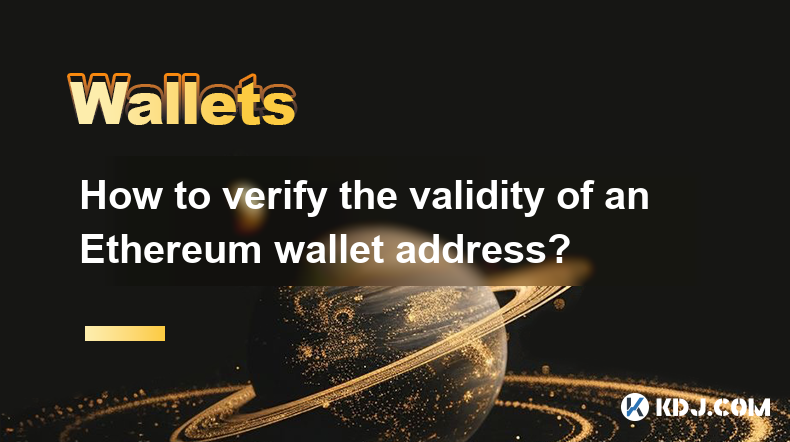
How to Verify the Validity of an Ethereum Wallet Address?
Verifying the validity of an Ethereum wallet address is crucial to prevent sending your funds to the wrong recipient, resulting in irreversible loss. A seemingly minor typo can lead to significant financial consequences. This article will explore various methods for ensuring you're interacting with a legitimate Ethereum address.
First, understand that an Ethereum address is a unique identifier, typically a 42-character alphanumeric string beginning with "0x". This address represents a specific account on the Ethereum blockchain. Simply possessing a string of characters that looks like an address doesn't guarantee its validity. It must correspond to an actual account on the network.
One of the simplest methods is visual inspection. Check for any typos or inconsistencies. A valid address will always start with "0x" and contain only alphanumeric characters (0-9 and a-f). Any other characters indicate an invalid address. Pay close attention to each character; a single misplaced digit or letter renders the address unusable.
Many cryptocurrency exchanges and wallet providers offer address validation tools. These tools often perform checksum validation. This process involves checking a built-in error-detection mechanism within the address format. If the checksum doesn't match, the address is invalid. Look for this functionality within your chosen platform's interface. This is usually integrated into the send/receive function itself.
Blockchain explorers are invaluable resources for verifying Ethereum addresses. Websites like Etherscan allow you to input an address and check its existence on the Ethereum blockchain. If the address is valid, the explorer will display transaction history, balance, and other relevant information associated with that account. The absence of any data suggests the address is invalid or hasn't been used yet.
Using a third-party address validator can offer an extra layer of security. Numerous online tools are available, specifically designed to validate Ethereum addresses. These tools often combine checksum verification with blockchain lookup, providing a more comprehensive check. Always exercise caution when using third-party tools and ensure you're using a reputable source.
Beyond the technical aspects, context is vital. Always verify the address through multiple channels if possible. If you're receiving an address from an email, cross-reference it with the sender's official website or social media. Be wary of unsolicited requests for cryptocurrency; never send funds unless you are absolutely certain of the recipient's identity and address validity.
Consider the source of the address. If you received it through an unofficial channel, such as an unsolicited email or message, treat it with extreme caution. Legitimate businesses and individuals will usually provide clear and reliable ways to verify their payment information. Never send funds based solely on an address you've received through untrusted means.
Remember, the consequences of sending funds to an invalid address are severe. Cryptocurrency transactions are irreversible. Always double- and triple-check the address before initiating any transfer. Taking the time to validate the address is a small price to pay for the security of your funds. Carelessness can lead to permanent loss.
While tools and methods exist to verify an address, human error remains a significant factor. Always maintain a meticulous and cautious approach when handling Ethereum addresses. A thorough verification process is paramount to secure your cryptocurrency holdings. Never rush the process.
Common Questions:
Q: What happens if I send ETH to an invalid address?
A: The ETH will be lost permanently. There's no way to recover funds sent to an incorrect or non-existent address.
Q: Can I recover ETH sent to an invalid address?
A: No. Ethereum transactions are irreversible. Once sent, the funds are gone.
Q: Are all 42-character strings starting with "0x" valid Ethereum addresses?
A: No. While they might look like valid addresses, they need to pass checksum validation and exist on the blockchain to be considered valid.
Q: What is a checksum in the context of Ethereum addresses?
A: It's an error detection code built into the address format. It helps prevent typos from causing funds to be sent to the wrong address.
Q: Why should I use a blockchain explorer?
A: Blockchain explorers provide independent verification of the address's existence and transaction history, adding an extra layer of security to the verification process.
Q: What if the blockchain explorer shows no transactions for the address?
A: This might indicate the address is either new (and hasn't received any transactions yet) or invalid. Further verification steps are necessary.
Haftungsausschluss:info@kdj.com
Die bereitgestellten Informationen stellen keine Handelsberatung dar. kdj.com übernimmt keine Verantwortung für Investitionen, die auf der Grundlage der in diesem Artikel bereitgestellten Informationen getätigt werden. Kryptowährungen sind sehr volatil und es wird dringend empfohlen, nach gründlicher Recherche mit Vorsicht zu investieren!
Wenn Sie glauben, dass der auf dieser Website verwendete Inhalt Ihr Urheberrecht verletzt, kontaktieren Sie uns bitte umgehend (info@kdj.com) und wir werden ihn umgehend löschen.
-
 M Jetzt handeln
M Jetzt handeln$0.2020
33.45%
-
 CRO Jetzt handeln
CRO Jetzt handeln$0.0943
16.09%
-
 SHX Jetzt handeln
SHX Jetzt handeln$0.0118
15.26%
-
 LAUNCHCOIN Jetzt handeln
LAUNCHCOIN Jetzt handeln$0.1323
14.88%
-
 VVS Jetzt handeln
VVS Jetzt handeln$0.0...02144
14.69%
-
 HSK Jetzt handeln
HSK Jetzt handeln$0.6711
13.86%
- Kraken, Heckflügel und Memecoins: Eine wilde Fahrt zum Grand Prix in Singapur!
- 2025-07-09 00:50:12
- Cronos sprunghaft zu springen
- 2025-07-09 01:30:12
- Ethereums Wall Street Love & Ruvi Ai's Audit Rally: Ein Krypto -Cocktail
- 2025-07-09 00:55:12
- Krypto -Münzen mit Wachstumspotenzial: Top -Picks für versierte Investoren
- 2025-07-09 01:35:13
- Onyxcoin (XCN) gegen Solana (SOL): Eine vielversprechende Wette im Krypto -Spiel?
- 2025-07-09 00:30:12
- Angebotsschub des PI -Netzwerks: Ein Rezept für Preisprobleme?
- 2025-07-09 02:10:13
Verwandtes Wissen
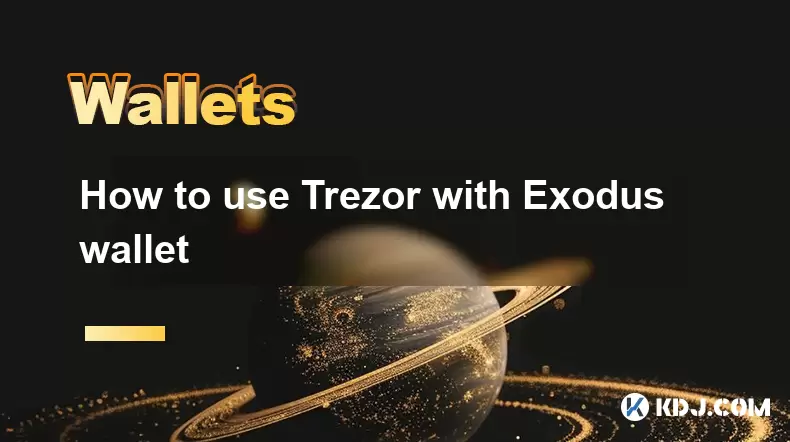
Wie man Trezor mit Exodus -Brieftasche benutzt
Jul 09,2025 at 12:49am
Verbinden Sie Trezor -Hardware -Brieftasche an Exodus -Software -Brieftasche Um Trezor mit Exodus -Brieftasche zu verwenden, müssen Benutzer die Hardw...
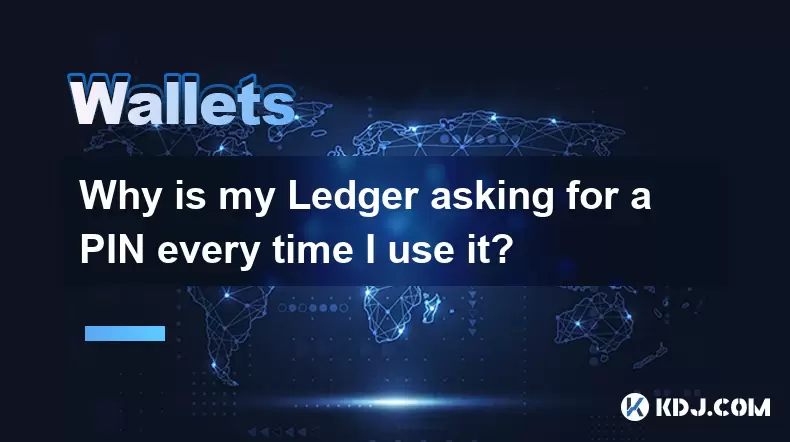
Warum fragt mein Hauptbuch jedes Mal, wenn ich es benutze, um eine PIN?
Jul 08,2025 at 11:21pm
Verständnis des Zwecks des PINs auf Ihrem Hauptbuchgerät Der PIN (Personalidentifikationsnummer) ist eine entscheidende Sicherheitsfunktion, die in je...
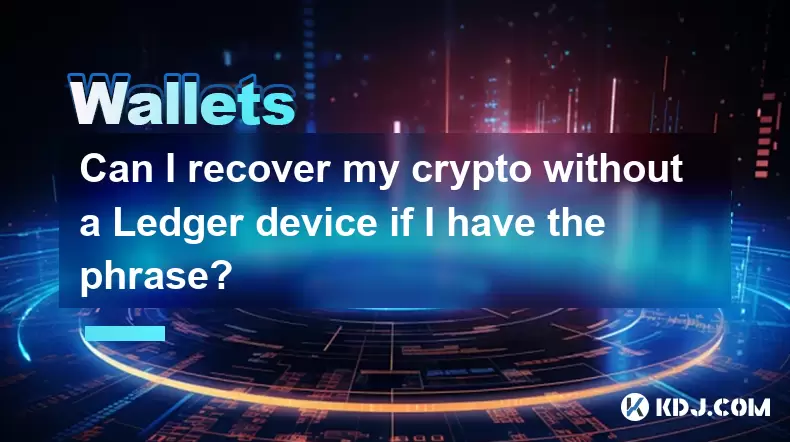
Kann ich meine Krypto ohne Ledger -Gerät wiederherstellen, wenn ich den Ausdruck habe?
Jul 09,2025 at 01:36am
Verständnis der Rolle eines Wiederherstellungsausfalls in der Kryptosicherheit Wenn Sie Ihren Wiederherstellungsausdruck haben, aber kein Ledger -Gerä...
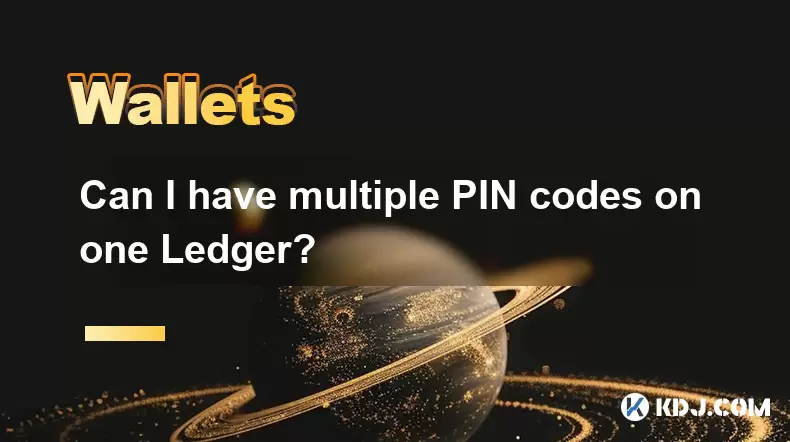
Kann ich mehrere PIN -Codes in einem Hauptbuch haben?
Jul 09,2025 at 12:35am
Verständnis der Grundlagen des dezentralen Austauschs (DEXS) Ein dezentraler Austausch oder Dex ist eine Art von Kryptowährungshandelsplattform, die o...
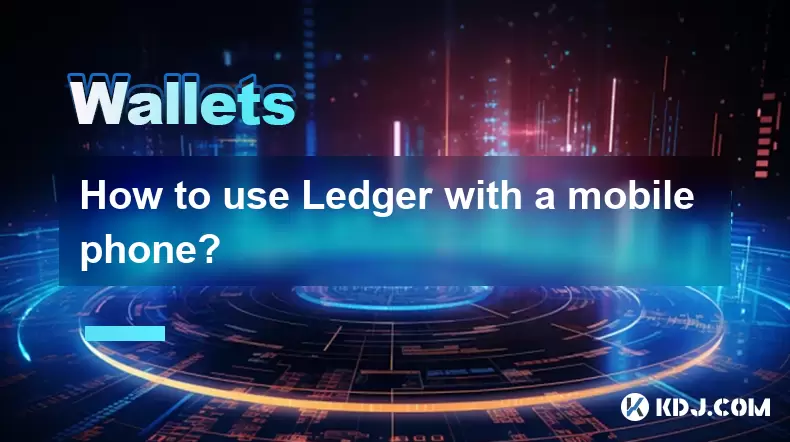
Wie benutze ich Ledger mit einem Mobiltelefon?
Jul 08,2025 at 10:49pm
Anschließen von Ledger -Hardware -Brieftaschen mit mobilen Geräten Die Verwendung eines Ledger -Hardware -Brieftasche mit einem Mobiltelefon bietet ei...
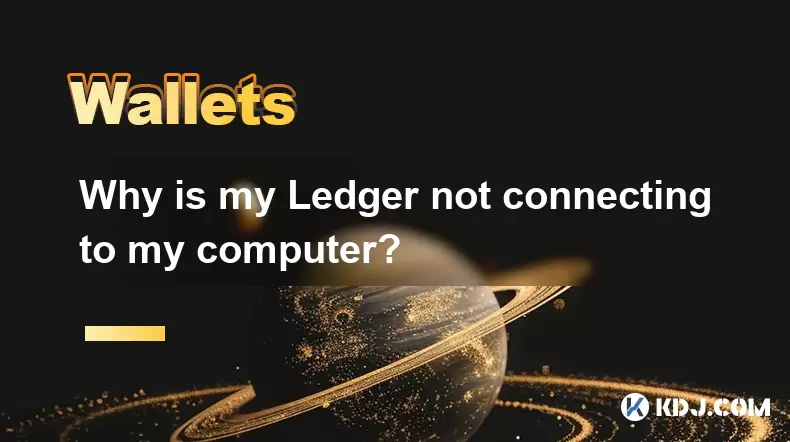
Warum stellt sich mein Hauptbuch nicht mit meinem Computer her?
Jul 09,2025 at 03:01am
Überprüfen der physischen Verbindung Wenn sich Ihr Hauptbuch nicht mit Ihrem Computer verbindet, besteht der erste Schritt darin, die physische Verbin...

Wie man Trezor mit Exodus -Brieftasche benutzt
Jul 09,2025 at 12:49am
Verbinden Sie Trezor -Hardware -Brieftasche an Exodus -Software -Brieftasche Um Trezor mit Exodus -Brieftasche zu verwenden, müssen Benutzer die Hardw...

Warum fragt mein Hauptbuch jedes Mal, wenn ich es benutze, um eine PIN?
Jul 08,2025 at 11:21pm
Verständnis des Zwecks des PINs auf Ihrem Hauptbuchgerät Der PIN (Personalidentifikationsnummer) ist eine entscheidende Sicherheitsfunktion, die in je...

Kann ich meine Krypto ohne Ledger -Gerät wiederherstellen, wenn ich den Ausdruck habe?
Jul 09,2025 at 01:36am
Verständnis der Rolle eines Wiederherstellungsausfalls in der Kryptosicherheit Wenn Sie Ihren Wiederherstellungsausdruck haben, aber kein Ledger -Gerä...

Kann ich mehrere PIN -Codes in einem Hauptbuch haben?
Jul 09,2025 at 12:35am
Verständnis der Grundlagen des dezentralen Austauschs (DEXS) Ein dezentraler Austausch oder Dex ist eine Art von Kryptowährungshandelsplattform, die o...

Wie benutze ich Ledger mit einem Mobiltelefon?
Jul 08,2025 at 10:49pm
Anschließen von Ledger -Hardware -Brieftaschen mit mobilen Geräten Die Verwendung eines Ledger -Hardware -Brieftasche mit einem Mobiltelefon bietet ei...

Warum stellt sich mein Hauptbuch nicht mit meinem Computer her?
Jul 09,2025 at 03:01am
Überprüfen der physischen Verbindung Wenn sich Ihr Hauptbuch nicht mit Ihrem Computer verbindet, besteht der erste Schritt darin, die physische Verbin...
Alle Artikel ansehen

























































































